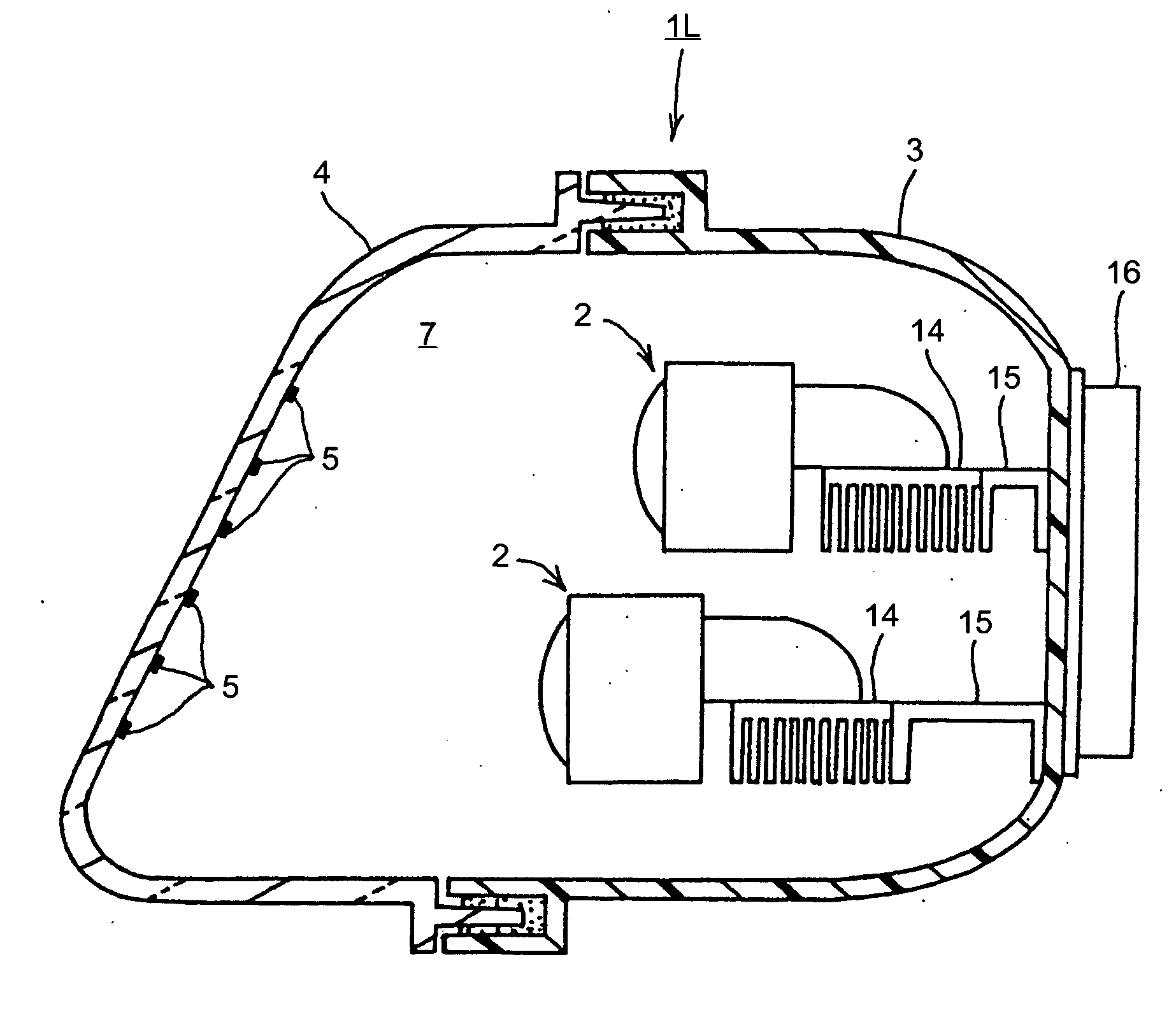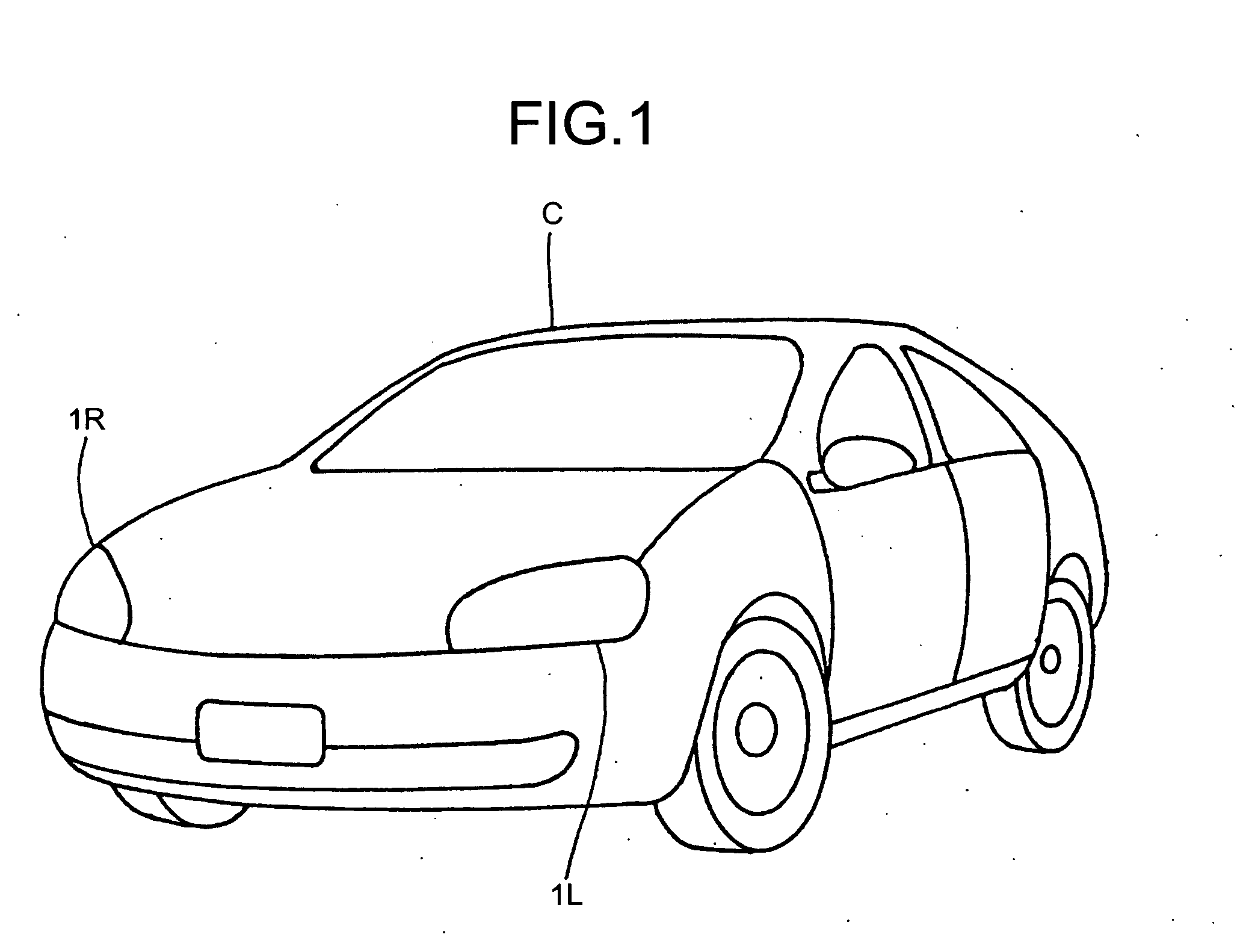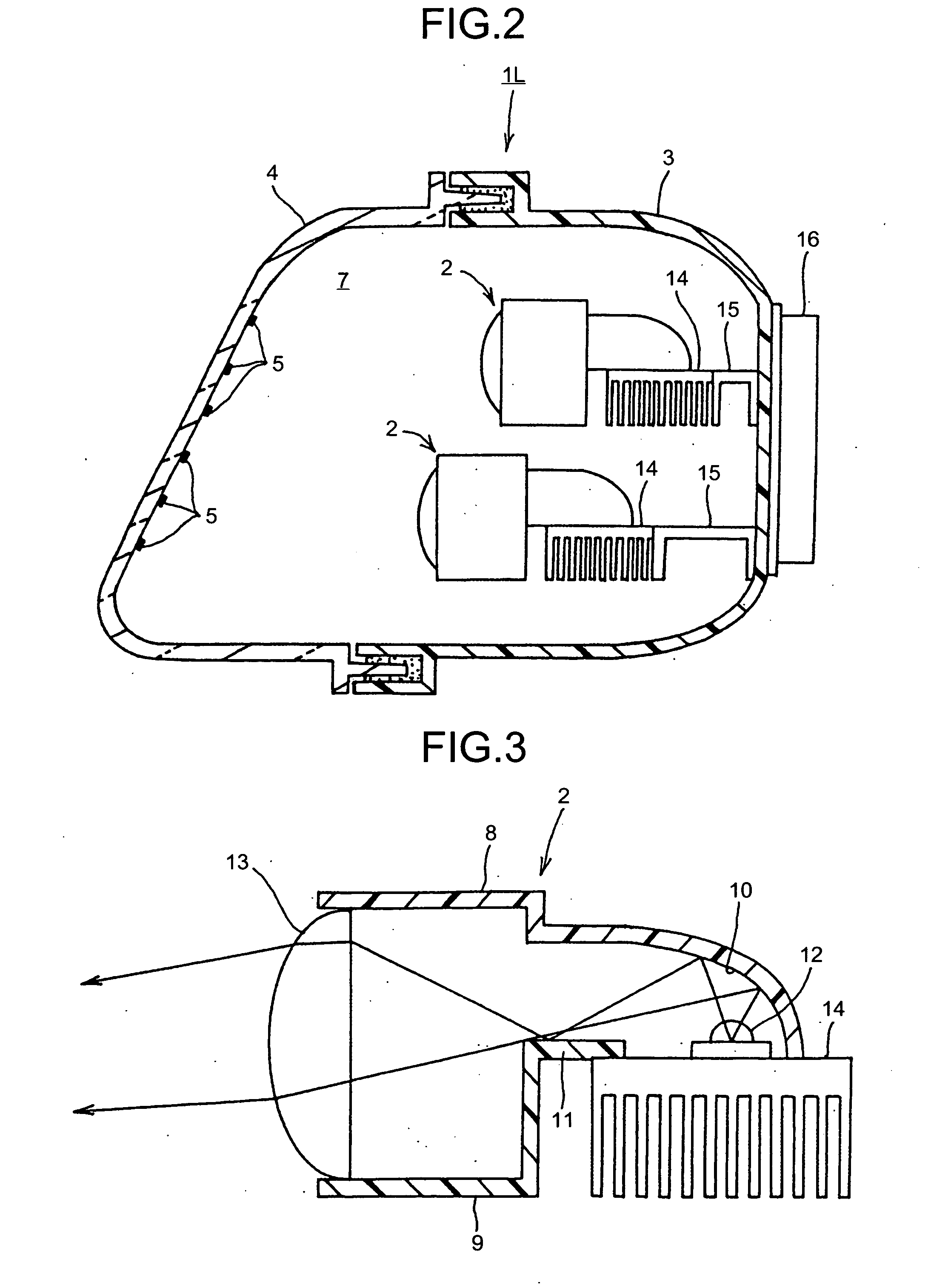Parts for vehicles and line heater unit for snow-melting structure part thereof
a technology for heating units and vehicles, applied in electric/magnetic/electromagnetic heating, lighting and heating apparatus, transportation and packaging, etc., can solve the problems of snow, ice or fogging adhesion to front lenses to melt or be removed, wrinkles or distortions on base films, and higher manufacturing costs
- Summary
- Abstract
- Description
- Claims
- Application Information
AI Technical Summary
Benefits of technology
Problems solved by technology
Method used
Image
Examples
first embodiment
[0036] FIGS. 1 to 10 are schematics of parts for vehicles and a line heater unit according to the present invention. Configurations of the parts for vehicles and the line heater unit are explained below. The parts for vehicles are head lamps 1L, 1R that emit light beams in a predetermined light distribution, for example, a low-beam distribution pattern. The head lamps 1L, 1R are mounted on both of right and left front sides of the vehicle C as shown in FIG. 1. The head lamp 1L on the left side is explained below. The head lamp 1R on the right side is substantially reversed left to right with respect to the head lamp 1L in configuration so that the explanation of head lamp 1R is omitted.
[0037] The head lamp 1L, as shown in FIGS. 2 and 4, includes five lamp units 2, a lamp housing 3, a lamp lens 4, a line heater 5, and a power-supplying unit 6. A lamp chamber 7 is defined by the lamp housing 3 and the lamp lens 4. The five lamp units 2 are arranged at two stages up and down respective...
fourth embodiment
[0092] The parts for vehicles and the line heater unit have the above configuration and their operations are explained below. While electric current is supplied to the line heater 5 and heat is generated in the line heater 5, a heat-generating temperature of the high-resistance conductive paste 19 is higher than that of the low-resistance conductive paste 190. Accordingly, a temperature from the upper portion to the intermediate portion of the lamp lens 4 where the high-resistance conductive paste 19 is mounted is higher than a temperature from the intermediate portion to the lower portion of the lamp lens 4 where the low-resistance conductive paste 190 is mounted. Thus, snow or ice adhered to from the upper portion to the intermediate portion of the lamp lens 4 is heated intensively, melted, and slips on a surface of the lamp lens 4. A slip phenomenon of the melted snow-or ice (an avalanche phenomenon) causes snow or ice adhered to from the intermediate portion to the lower portio...
ninth embodiment
[0125] In particular, because the separator 21A includes the V-shaped slits 32 formed in a lateral direction along the lateral lines of the line pattern of the conductive paste 19, it is possible to support the lamp lens 4 that includes a curved surface of large curvature and a curved surface of small curvature. In other words, when the separator 21A is employed to transfer the line heater 5 to the lamp lens 4, open ends of the V-shaped slits 32 are supported to the curved surfaces of large curvature of the lamp lens 4 and close ends of the V-shaped slits 32 are supported to the curved surfaces of small curvature of the lamp lens 4. Thus, ends of the separator 21A that correspond to the open V-shaped slits 32 are narrowed and the other ends of the separator 21A that correspond to the closed V-shaped slits 32 remain substantially as they are. This makes it possible to securely and easily transfer the line heater 5 to the lamp lens 4 that includes the curved surface of large curvatur...
PUM
 Login to View More
Login to View More Abstract
Description
Claims
Application Information
 Login to View More
Login to View More - R&D
- Intellectual Property
- Life Sciences
- Materials
- Tech Scout
- Unparalleled Data Quality
- Higher Quality Content
- 60% Fewer Hallucinations
Browse by: Latest US Patents, China's latest patents, Technical Efficacy Thesaurus, Application Domain, Technology Topic, Popular Technical Reports.
© 2025 PatSnap. All rights reserved.Legal|Privacy policy|Modern Slavery Act Transparency Statement|Sitemap|About US| Contact US: help@patsnap.com



